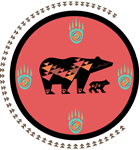Focuses on the challenges of conducting research in Native American communities and provides a multi-step model for developing, implementing, and evaluating drug abuse prevention programs in partnership with Native American communities. Key steps in the model include building collaborative relationships with community members, developing interventions to fit local culture and norms, training indigenous staff to implement the program(s), and obtaining on-going feedback from participants using both qualitative and quantitative methods. An illustrative case study described here, the Native American Prevention Project Against AIDS and Substance Abuse, serves to show how integrating cultural and community input into the project can lead to empowerment of community members and successful program outcomes. (PsycINFO Database Record (c) 2016 APA, all rights reserved)
This website is supported by Grant Number 90CZ0034-01-00 from the Children’s Bureau within the Administration for Children and Families, a division of the U.S. Department of Health and Human Services. Neither the Administration for Children and Families nor any of its components operate, control, are responsible for, or necessarily endorse this website (including, without limitation, its content, technical infrastructure, and policies, and any services or tools provided). The opinions, findings, conclusions, and recommendations expressed are those of the author(s) and do not necessarily reflect the views of the Administration for Children and Families and the Children’s Bureau.

